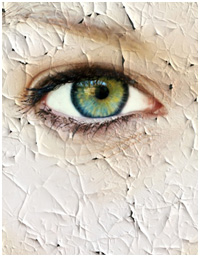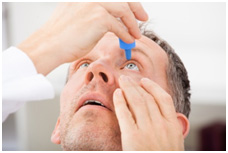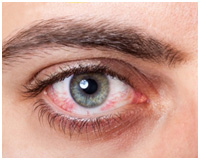
Dry Eye
Tears are very important for the health of the eye. They wash away foreign substances and keep the eye moist and lubricated. Dry eye occurs when there is reduced production of tears or the quality of the tears produced is poor. Dry eye is very common affecting 10% of the Australian population and usually develops into a chronic problem.
Risk Factors & Causes
- Reduced Tear Production – associated with age
- Dry, windy or dusty environments
- Systemic Disease – including rheumatoid arthritis, Sjogren’s syndrome, eczema & lupus
- Medication – including anti-depressants, anti-histamines, sleeping pills &cold and flu medication
- Reduced blinking – common in office or computer based occupations
- Contact lens wear
- Smoking
- Previous laser refractive surgery
Symptoms
- Burning
- Grittiness
- Itchiness
- Dryness
- Foreign Body Sensation
- Tired Eyes
Often the eyes are also very watery as tears flood the eyes to try to reduce the dryness.
Treatment
It is important to understand that dry eye cannot be cured but it can be managed. The management for dry eye varies greatly depending on the severity of the condition. Simple lifestyle factors such as wearing sunglasses while outside, avoiding dry, dusty environments and blinking frequently when using computers and other screen devices may manage mild cases. There is a wide variety of lubricating eye substances available over the counter at pharmacies to relieve dry eyes. These range from watery eye drops to thick, creamy lubricating ointments. Your doctor may also decide to alter your medication if they believe these are contributing. Other supplements such as fish oil and flaxseed oil are beneficial. In more severe cases medicated eye drops may be prescribed or punctal plugs may be inserted to block tear drainage.


Blepharitis
Blepharitis is a chronic inflammation of the eyelids that is often very irritating. It is caused by a build-up of bacteria on the eyelid margins and blockage of the oil glands that produce the coating over tears that stops them evaporating out of the eye. Therefore it not onlycreates inflammation but also results in dry eye. The blocked glands also commonly lead to eye lid styes and cysts.
Symptoms
- Red eye lids
- Itchiness
- Burning
- Crusting of the eyelids
- Intermittent blurred vision
- Sore eyes
- Eye lid styes and cysts
- Sticky discharge
- Ingrown eyelashes
Treatment
Treatment of blepharitis, like dry eye, is ongoing. The main treatments are lid cleansers and shampoos such as Johnson & Johnson baby shampoo, Lid Care or diluted baking soda which helps to clear away the excessive bacteria and debris along the lid margins. Warm compresses also help to unblock the eyelid oil glands. Lubricating eye drops and creams are used to make the eye more comfortable and reduce dryness. Depending on the severity the ophthalmologist may also prescribe anti-inflammatory eye drops as well as anti-bacterial tablets.
